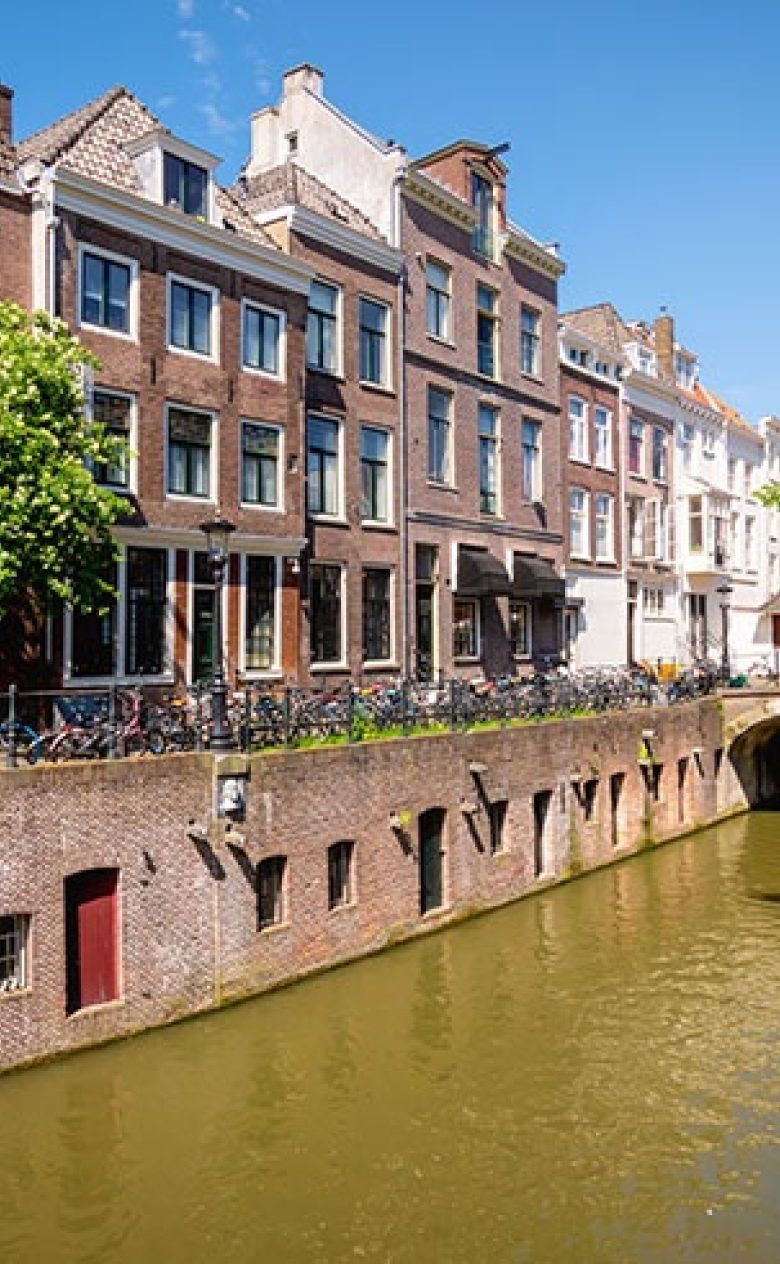Quay walls: smart and future-proof
A quay wall is more than a wall in the water. Quay walls are essential to ensure the safety and functioning of ports, cities, rivers, canals, inland waterways and their surroundings. Quays must hold up over long periods of time under loads from water and soil and external loads from ships and transportation over the quays . Over its lifetime, quay infrastructure comes under pressure from corrosion, degradation, subsidence, sea level rise and more extreme weather. Many of today's quay walls have lasted for decades, or even centuries (e.g. in Amsterdam). To protect people and areas also in the future, it is necessary that existing quay walls can continue to function as long as possible and that new quay walls are smart and future-proof.

Smart quay walls
Many cities along waterways have quay walls and in port areas they are indispensable. Future-proof quay walls are designed to be ready for a changing future By applying sensors and monitoring, these "smart" quay walls are managed optimally. This enables the port to handle larger ships and more cargo, leading to higher productivity and improved competitiveness.
Quay walls essential for functioning and quality of cities
Major cities such as Amsterdam, Rotterdam, Utrecht, The Hague and many Hanseatic cities manage kilometers of quay walls along canals and canals. These quay walls are essential to the functioning and quality of the city. One can think of the Unesco status of Amsterdam's ring of canals and Utrecht's unique wharf cellars. Many of these old masonry quays are still founded on wooden piles and long past their useful life.
When assessing and maintaining these old quay walls, a standard approach is not enough. After all, many miles of quay wall are involved. Maintaining or replacing quays is costly and drastic for the life of the city. Setting priorities is therefore necessary. Through a smart combination of inspection, monitoring and advanced models, it can be assessed whether a quay wall is still functioning well for a longer period of time, or whether reinforcement or replacement is needed.
Sustainable quays
Quay walls also contribute to other tasks. Examples include energy transition, CO2 footprint reduction and circularity. The construction and maintenance of quay walls can also have a significant impact on the environment. Sustainable quay walls are designed to minimise these impacts and preserve the environment for future generations. Designing quay walls with ecology in mind minimises negative impacts and preserves natural habitats for animals and fish.
Research by Deltares
Deltares is researching ways to make quay walls more sustainable and future-proof in the face of the effects of climate change and other changing conditions.
Some examples of what Deltares is doing:
- Research to smartly accelerate the replacement of quay walls, reduce damage risks and identify where the greatest risks are.
- Research on using new technologies such as sensor systems, drones and remote sensing to monitor the condition of quay walls and channel banks and predict when maintenance or replacement is needed.
- Research into the use of "green infrastructure" such as planted levees, floating gardens and rain gardens, which can help absorb and filter rainwater, improve water quality and increase biodiversity.
- Research ways to improve the accessibility and usability of wharves and canals for recreational purposes, such as boating, fishing and swimming.
- Research into the degradation effects (such as corrosion) of sheet pile walls and anchor systems. For example, in KpNK context or SITO/KPP research for Rijkswaterstaat.
- Research into new materials and techniques for reinforcing quay walls and channel banks to protect them from erosion and flooding.
Working together means combining knowledge
Deltares has a broad network of cooperation partners in both the public and private sectors. Deltares works together with other institutes, universities and experts to provide the best solution to the challenges in the field of quay walls and coastal infrastructure. At Deltares, we are open to valuable collaborations. Working together for a sustainable future.
An example of such a valuable collaboration: Deltares and TU Delft have developed a method to map quay subsidence much faster. With TU Delft's scientific knowledge, Deltares developed a useful method for the client using satellite measurements.
Deltares as a knowledge partner
Together with universities and other research institutes, we conduct applicable scientific research on quay walls and other topics related to ports and urban infrastructure. We connect practical knowledge and experience with our expertise, technology and facilities. In this way we contribute with both fundamental and applied research to smart innovations, solutions and applications in and for society.
Deltares helps national and local governments, port companies and market parties, such as engineering firms, contractors and consultants, to develop new technologies, materials and methodologies for the maintenance and construction of future-proof quay walls. Check out the various interesting quay projects of Deltares at the bottom of this page.

Related content
-
Future-resilient ports and waterways
-
Underground infrastructure essential
-
Delta region well protected and habitable with Nature-based Solutions
-
Critical infrastructure resilience
-
Reliable track now and in the future
-
Underground constructions
-
Hydraulic structures resilient and safe for future generations
-
Climate resilient roads
-
Future-proof infrastructure


